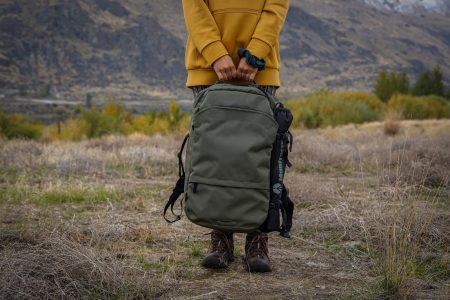
Photo: Unsplash
Thinking about traveling this winter vacation? This winter, travel is on… to an extent! You may not be making the trip you had dreamed of earlier in the year, but camping and hiking holidays could still be a possibility. Not only are they good for you, but they will help you put more money back into the local economies, or if you’re traveling abroad, it will help sink finances back into the tourism industry.
Seasoned hikers, campers, and backpackers don’t let the weather spoil the excitement and fun of business as an adventure activity. Despite being highly challenging, winter camping can be a dangerous endeavor if campers are not fully prepared for the hardships cooked up in cold weather. Here are five things to consider when considering a winter camping trip.
Clothing
A winter vacation such as a camping trip means multiple packing bags stuffed with clothing to the top. Pack several pairs of thick, long pants, long-sleeved tops, woolen garments, fleeces, jackets, socks, gloves, and hats. If you are going skiing, you need sweaters, waterproof ski jackets, waterproof pants, and a ski cap. Don’t pack cotton clothing and clothes made from moisture-wicking fabrics. They absorb body sweat and increase the risk of hypothermia.
Dress in layers to keep your body warm. Clothes tend to get wet faster. Change wet clothing immediately, as cold, damp extremities can cause frostbite. When you sleep at night, you should cover your head with a wool hat. Follow the escape of heat and help you stay warmer.
Footwear
Your sneakers may be your first love, but they can be your worst enemy on a winter camping trip. Boots are the ideal choice of footwear. They must be up to the ankle or knee. You may also want to look at comfortable waterproof shoes to ensure that snow and moisture do not enter the shoe. When buying boots, you should inspect the bottom. It should offer good traction on ice and snow.
Protective goggles
Not many of us know that the glitter of snow is harsher on the eyes than regular sunlight. Protect your eyes with a pair of wrap-around sunglasses or ski goggles.
Shelter and tent equipment
There are seasonal specific tents available on the market. Investing in an “all season” tent is a good option. Tents designed for cold weather are equipped to withstand high winds and have stakes that anchor well in the snow. The tent should have an easy setup. To be safe, buy a rainfly in lousy weather. Bring a tarp large enough to fit under the tent. The sleeping bag must be designed for freezing weather. A camping heater helps to heat the interiors of the tent. There are different types of heaters: electric, battery, or propane.
Food
An increase in calorie intake is a must in cold weather. You can cook at the campsite. However, pack enough ready camping to eat food and prepared meals. In addition to the items listed above, have a: flashlight, extra batteries, headlights, extra fuel, handheld water purifier, gas stove, frying pan, coffee filters, salt and pepper, seasonings, face masks, face masks, toilet paper, lip balm and sunscreen, duct tape, knives, necessary tools, and a first aid kit on board. Bring a radio to get updates on the weather too. It’s time to get packing!






